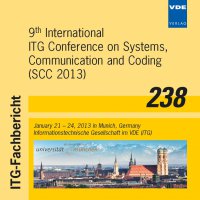A Dynamic Spectrum Access Scheme for an LTE-Advanced HetNet with Carrier Aggregation
Conference: SCC 2013 - 9th International ITG Conference on Systems, Communication and Coding
01/21/2013 - 01/24/2013 at München, Deutschland
Proceedings: SCC 2013
Pages: 6Language: englishTyp: PDF
Personal VDE Members are entitled to a 10% discount on this title
Authors:
Naranjo, Juan Diego; Bauch, Gerhard (Institut für Informationstechnik (EIT3.2), Universität der Bundeswehr München, Neubiberg, Germany)
Saleh, Abdallah Bou; Viering, Ingo (Nomor Research GmbH, Munich, Germany)
Halfmann, Rüdiger (Nokia Siemens Networks GmbH, Munich, Germany)
Abstract:
Cognitive radio is seen by many actors in the wireless industry as a core technical evolution towards the exploitation of the full potentials of future radio communication systems. Dynamic spectrum access is aiming at integrating cognitive capabilities into the 4G world, evolving current wireless system infrastructures into an integrated, scalable and efficiently managed cognitive system ensuring higher spectrum utilization efficiencies than the conventional dedicated spectrum approach. The idea is to take advantage of the LTE-Advanced carrier aggregation feature which was introduced by 3GPP release 10. In this context, we propose a cognitive radio based dynamic spectrum access mechanism which works jointly with carrier aggregation to activate and deactivate dynamically assigned component carriers at an eNB depending on the traffic load of its cells. Activation and deactivation of component carriers can be done fast since it depends on the MAC protocol, and it happens within a few time slots in the order of milliseconds. So a combined cognitive radio LTE system could react spontaneously to changes in cell load to provide users access to extra spectrum bands which are otherwise underutilized. The performance of the proposed scheme has been investigated for a heterogeneous LTE-Advanced network deployment. The deployment consists of a layout of macro-eNBs that provides the basic network coverage, while a pico-eNBs layout provides high capacity to hotspots. Results show that the proposed dynamic spectrum access with carrier aggregation approach can significantly improve the cell throughput at mid to high level ranges traded off with a small degradation at the low cell throughput regime. Moreover, spectral efficiency is enhanced in cases where underutilized spectrum is freed, whereas it degrades in cases where extra spectrum is assigned and not fully utilized.


